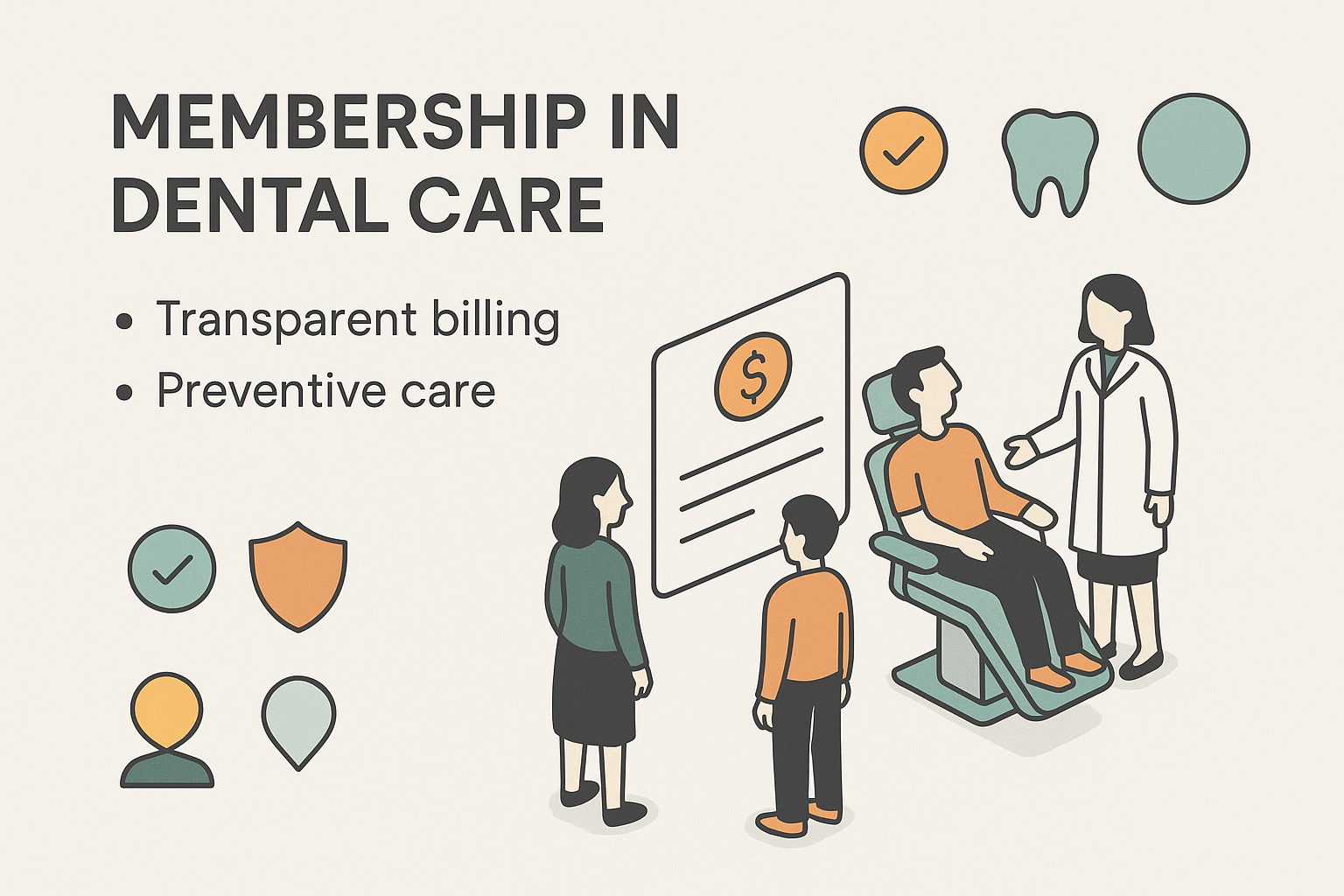Transforming Dental Care: Why Patients Appreciate Membership Models
As dental practices throughout Toronto and the Greater Toronto Area (GTA) continue to adapt to patient demands for simplicity, transparency, and affordability, the traditional insurance model increasingly feels outdated. In its place, dental membership models—like the one championed by United Dental Coop (UDC)—are emerging as a practical alternative. This progressive approach simplifies treatment accessibility while allowing clinics to build stronger relationships with patients based on care rather than contracts.

1. No Insurance. No Surprises. Just Access.
One of the core advantages of UDC’s membership model is full transparency. Unlike traditional insurance systems, patients are not burdened with deductibles, co-insurance complexities, or limitations on coverage. Instead, under the membership, patients clearly understand the services covered—and the associated costs—before stepping into the operatory. This assurance is particularly important for patients in Ontario, where public dental coverage may not always meet their expectations for comprehensive care.
With no hidden fees or surprise bills, dental practices can offer a more predictable, patient-centric experience, eliminating barriers that often prevent individuals from seeking timely treatment. This clarity not only builds trust but also results in higher patient satisfaction and retention rates.

2. Preventive Care That Feels Proactive
Modern dentistry emphasizes proactive over reactive treatment. Membership models align perfectly with this philosophy. Through the UDC structure, patients can access regular check-ups, professional cleanings, and X-rays by paying only a modest copayment or no additional fee—depending on the care outlined in their membership tier.
This ensures continuity in oral health maintenance and encourages early intervention, both of which contribute to better long-term outcomes. For practices, this model fosters greater patient engagement because members are more likely to show up for routine care and comply with recommendations.

3. Discounts That Reward Loyalty
Completion of a membership cycle yields benefits beyond simplicity. Patients enjoy reduced pricing on in-house services, from fillings to crown placements, driving increased acceptance of treatment plans. Practices benefit by seeing higher case conversion rates and improved financial predictability, which can support investment in new dental technologies or tools.
For example, patients requiring cosmetic services or restorative treatments are more willing to proceed when they understand their loyalty to the clinic is recognized with material benefits. This model simplifies financial planning for both sides, removing the negative stigma or hesitation often associated with upselling treatment.

4. A Relationship, Not a Policy
At its core, the UDC model nurtures relationships, not transactions. Where traditional dental insurance creates tension through denials or policy fine-print, membership fosters mutual respect and straightforward engagement. Dental teams focus on care delivery while patients remain confident that their needs are understood and met without navigating third-party administrators.
In a region as diverse and community-oriented as the GTA, maintaining long-term relationships with patients can be a practice’s most important asset. This approach also facilitates more natural conversations about health goals, risk prevention, and optional care enhancements.

5. Patients Who Stay—and Spread the Word
The patient experience under membership programs isn’t just positive—it’s referral-generating. Satisfied patients in transparent care models are more likely to recommend their dentist to friends or family. These word-of-mouth endorsements are especially powerful in urban areas like Toronto, where choice and competition are high.
Clinics employing membership systems often realize more stable appointment schedules and dependable income flows, as loyal members seek to make the most of their plan while encouraging others to join. Higher patient retention also means that marketing costs can be reduced, leaving greater resources for clinical operations or community outreach.

6. Membership-Ready Tools for Modern Clinics
Implementing a successful membership plan requires more than just outlining prices; it demands smart systems to manage billing, patient engagement, and service tracking. Leveraging solutions like those available through EBIKO’s dental office products allows dental teams to streamline their process—ensuring accurate enrollment, automatic renewals, and simplified fee collection.
Tools such as appointment scheduling software, in-office displays, and digital consent forms from EBIKO can enhance how your membership offerings are understood and adopted by patients. Elevating operational efficiency not only reduces administrative burden but also opens up more chair time for quality care.

7. A Forward-Thinking Model With Canadian Context
While some provinces in Canada provide public dental services for low-income individuals, the majority of Canadians still rely on private coverage or out-of-pocket payments. In this context, membership models can fill a valuable gap by offering predictability and affordability without sacrificing quality.
Dental practices in Ontario that adopt flexible membership options are better positioned to serve uninsured populations, newcomers, and patients seeking ongoing preventive care without bureaucratic delays. This positions your clinic as accessible, forward-thinking, and focused on long-term health outcomes—not just episodic care.
Combining a membership-based philosophy with trusted suppliers like EBIKO ensures your clinic is equipped with efficient tools and high-quality dental supplies suited to evolving patient needs across Canada's multicultural landscape.

